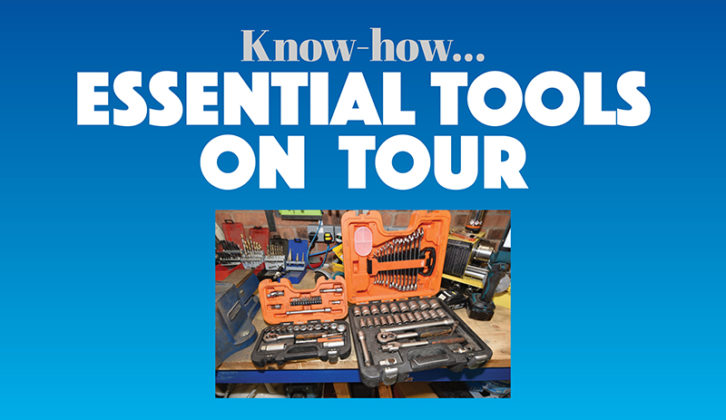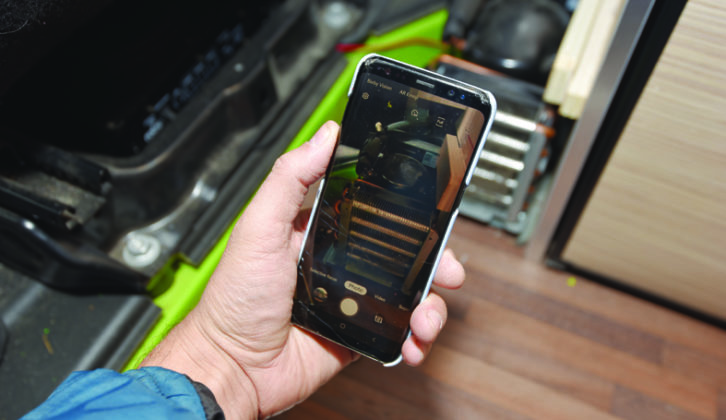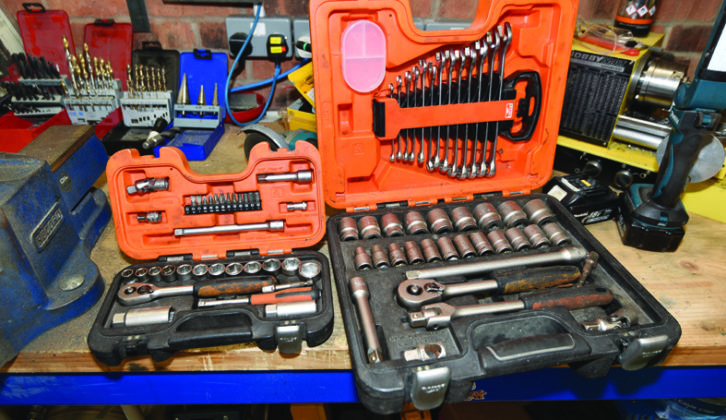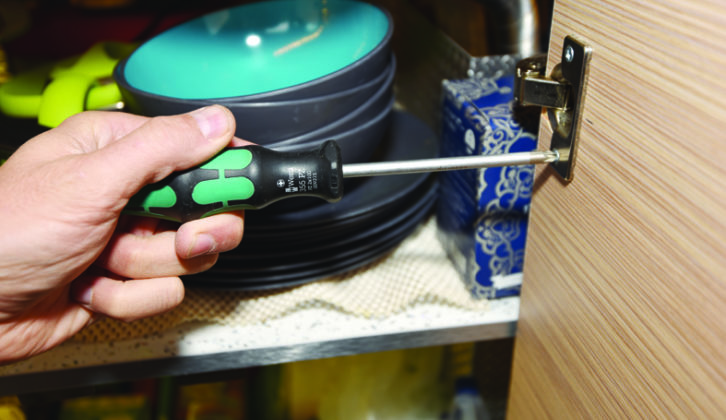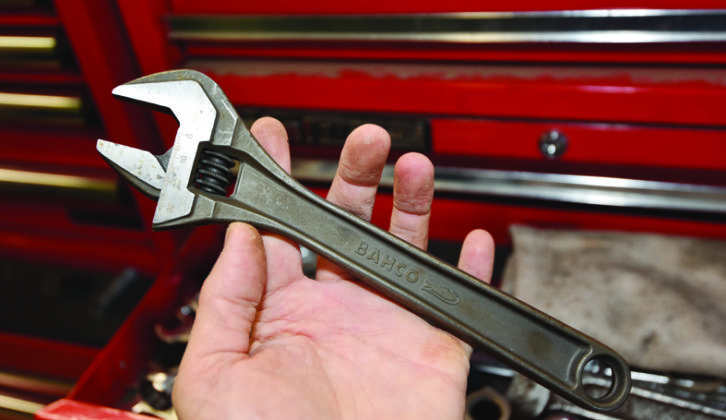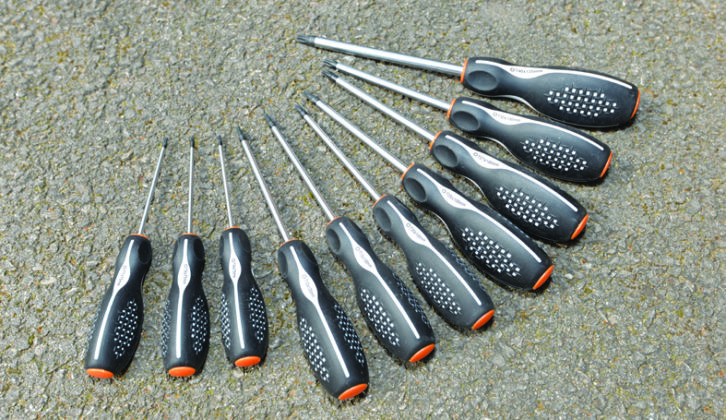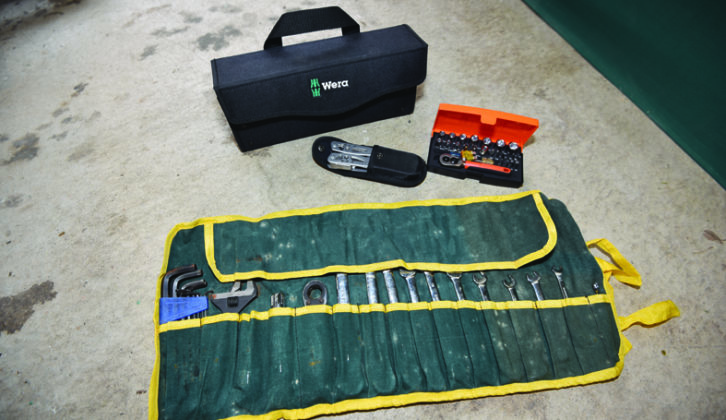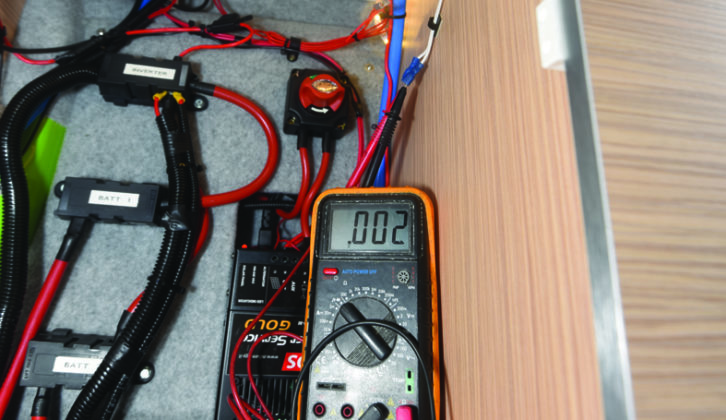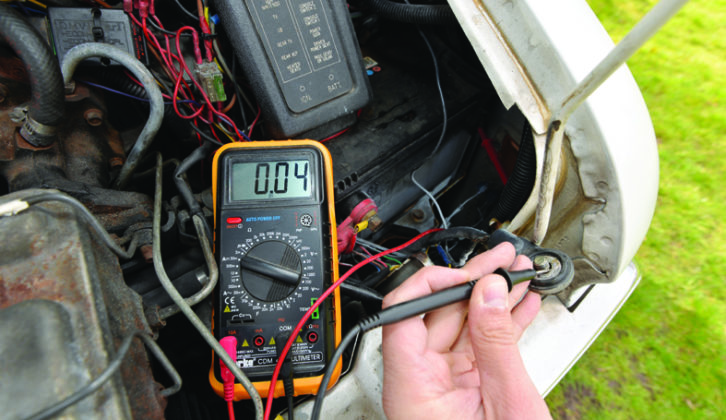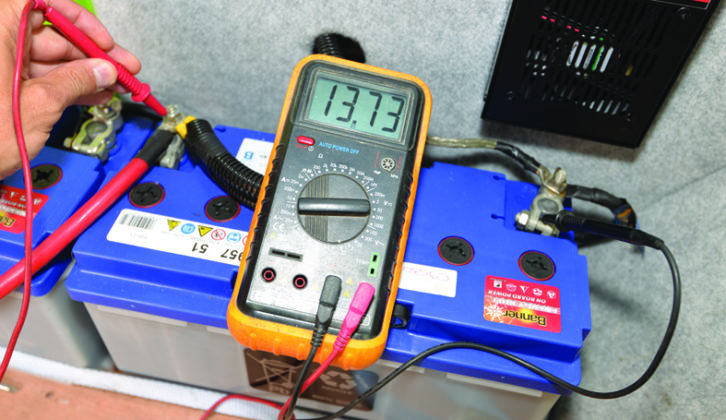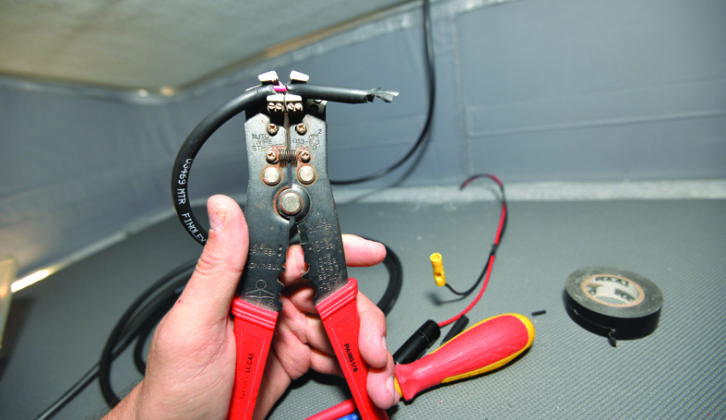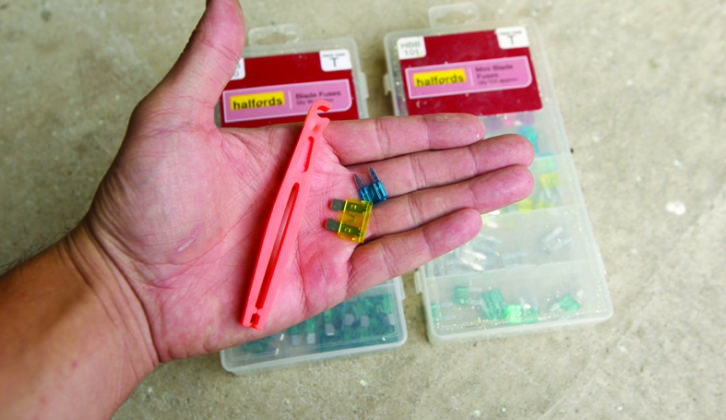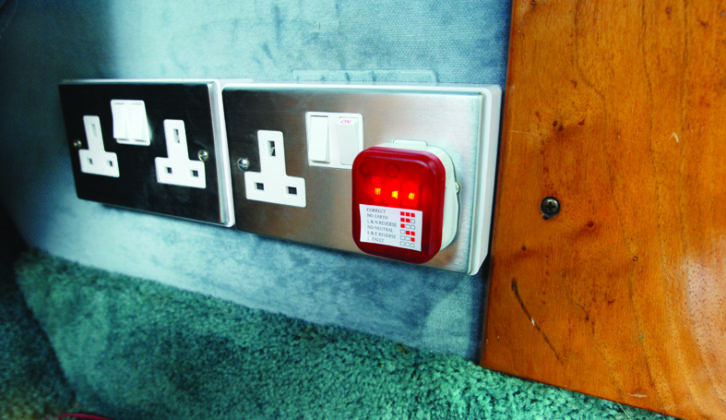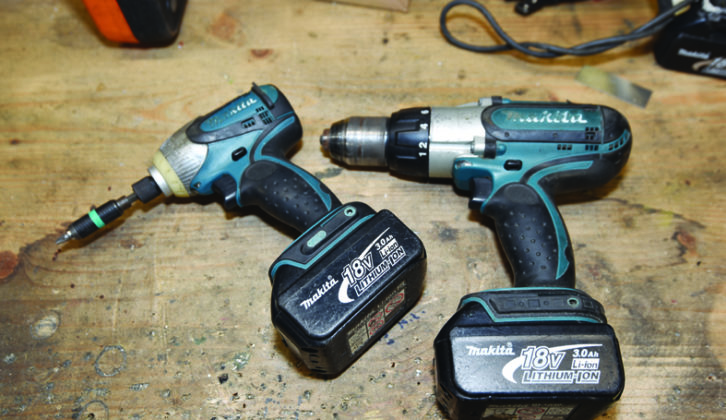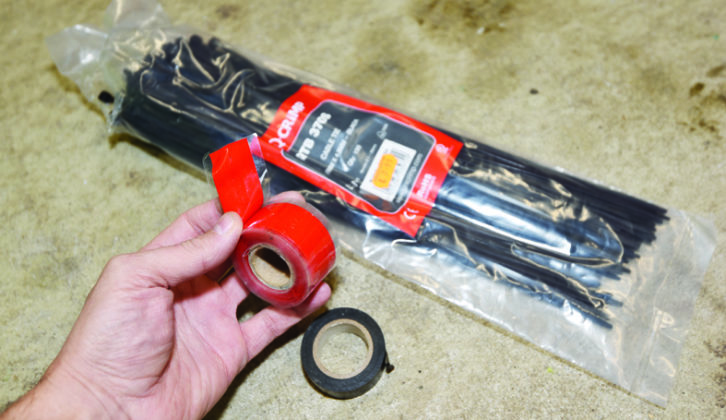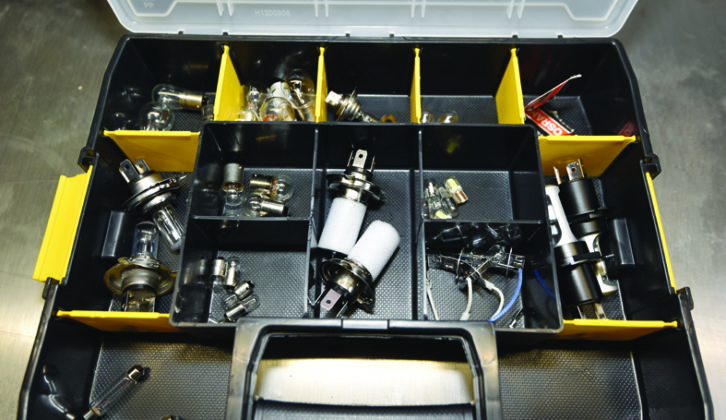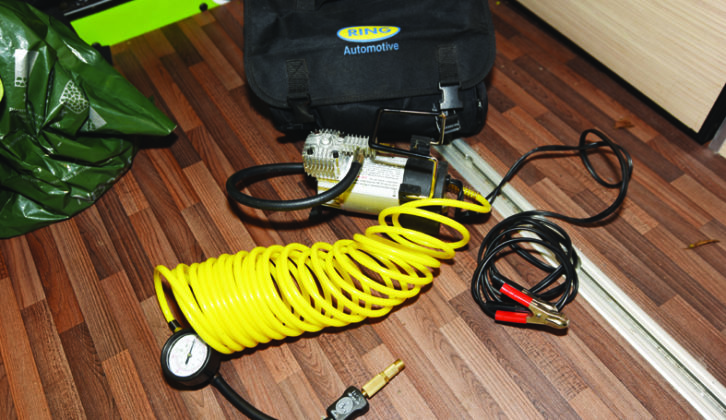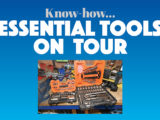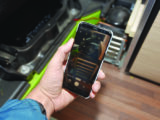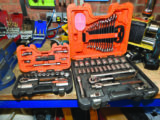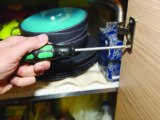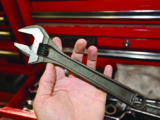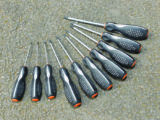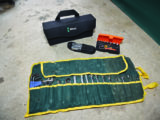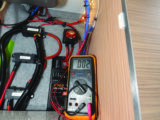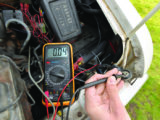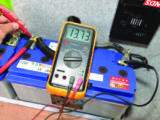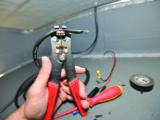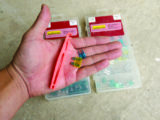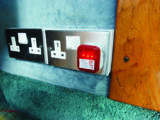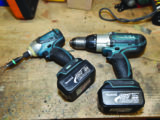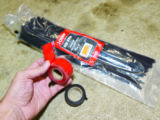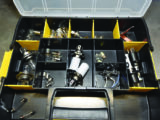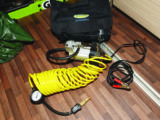One of the many things touring teaches you is self-reliance, and the pandemic has reinforced this. Why rely on others when you can fix minor problems yourself?
Here, we show you some of the best kit to pack for a motorhome tool kit when you’re on tour.
There is a belief that motorhome owners couldn’t possibly fathom their ‘van’s complexity without visiting a dealer or retailer. For some base vehicle electrical problems – and all safety-related matters of course – that is certainly true, but for some of the habitation equipment, this isn’t the case. Unlike cars, motorhomes are largely handbuilt by human beings. So if they can do it…
What you do need, though, is a reasonable set of tools covering the basic kit in your vehicle, and common sense. Certain things you definitely want to leave to the professionals, such as safety-related items (including gas leaks, base vehicle brakes and so on); but for anything not safety-critical – such as a broken window latch, a faulty light fitting, a toilet that won’t flush, or a bed mechanism that’s playing up – I believe it’s worth investigating yourself.
Not only will you save time and money, but the feeling of glory that comes with a successful fix can be addictive! Even if you don’t succeed, at least you’ll have a clearer understanding of how it works and be better able to brief the garage repairing it. (You should also keep in mind how any warranty might be affected, of course.)
Do your homework
Before you buy any tools or roll up your sleeves and get stuck in, do some homework. Start with the owner’s manuals and product information booklets that are supplied with every motorhome – these have fuse locations, fluid specifications and all sorts of handy procedures and tips.
Look for videos about similar faults and ask questions on forums that you trust. Videos are most helpful, but forums can point you in the right direction. They can also give you alternative ideas on how to tackle the task.
Equally, look up the price of the parts you’re working on. If t’s only a £5 part, you might want to simply replace it, but if it’s rare (this is common on older motorhomes) or expensive, you’ll need to be more careful in your approach.
Use a phone or tablet camera
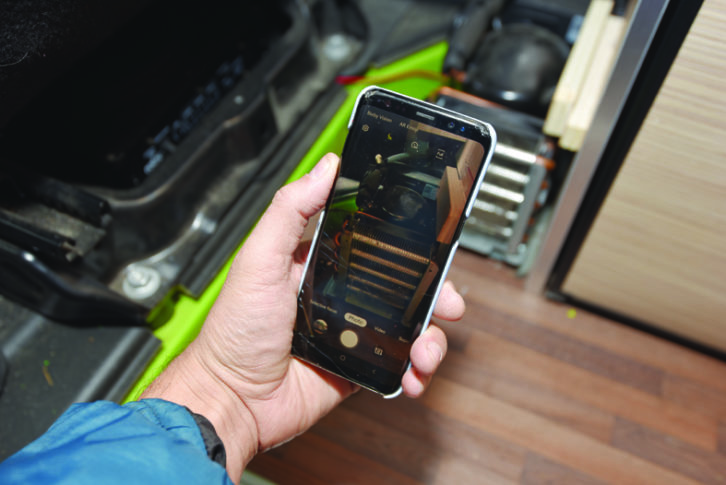
If you’re dealing with anything that is fiddly or complicated, photograph it at every step. Not only does this give you a guide for reassembly, it also allows you to share the images with other people in the event that you need help. It’s all too easy to miss a small detail or part on reassembly.
Basic hand tools
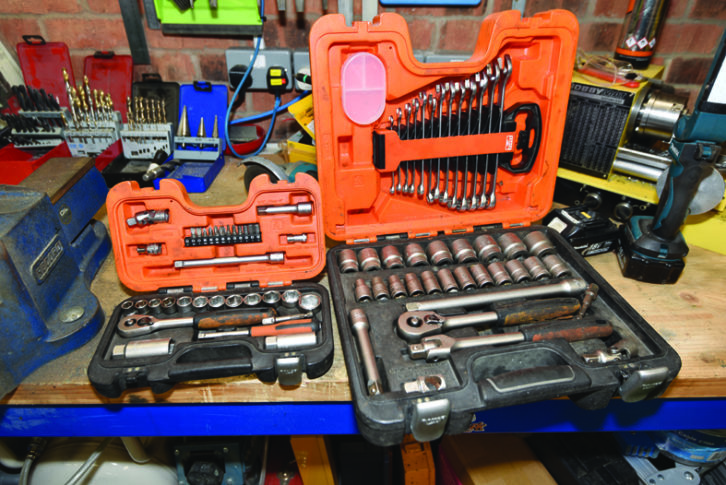
An all-in-one socket set in a carry case is the best place to start, but which set to choose depends on your enthusiasm and willingness to get stuck in with the oilier mechanical jobs. For just the habitation area, a basic 3/8-inch drive socket set, with a selection of extensions, sockets and screwdriver bits, is a good starting point. The key is to beware the false economy of cheap, unbranded tools, which will damage fixings, snap and skin your knuckles, and wear out rapidly.
But you don’t have to spend £2000 on a socket set to get good tools. Machine Mart’s Pro range are good basic sets, while Halfords Advanced socket sets offer great value (and come with a first-rate lifetime warranty).
Other excellent brands include Stanley, Bahco, Sealey, Laser, Teng, Facom and Wera.
The one I always reach for is Bahco’s S330 (£33 from Screwfix). This 3/8-inch set includes a set of screwdriver bits that are great for a wide range of habitation tasks, and a selection of sockets up to 22mm to tackle light base vehicle tasks.
If you’re also comfortable handling certain base vehicle tasks – and have a garage or large locker to store it – a 1/2-inch socket set is handy. The Halfords Advanced range has amazing all-in-one sets from £100 to £260. If this is a bit rich, try Bahco’s S400 (about £86 from ManoMano), or the Clarke PRO389 (Machine Mart, £72).
If you have a classic British motorhome, you’ll need a set with imperial, or surface-drive, sockets – many Halfords Advanced sets have these.
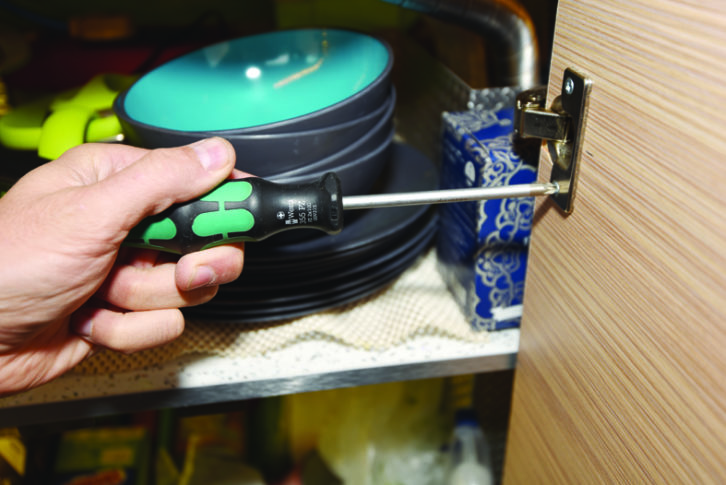
Most of these sets come with some form of screwdriver bits, but it’s best to pack a separate set of screwdrivers. Wera makes excellent ones (Screwfix sells a set of six for £26) that have special laser tips, which prevent them from slipping on the screws and are excellent.
It’s also worth buying some stubby flathead, crosshead and Pozidrive screwdrivers (a few quid online), because motorhomes tend to have limited access to certain fixings. Avoid cheap unbranded screwdrivers, which don’t last and just chew up screw heads – don’t waste your money on them.
Some people sneer at them, but a good-quality adjustable spanner is another must. As well as being able to tackle most sizes of fixings from 0-20mm (in the case of a typical medium-sized one), they’re ideal for older ‘vans that might use imperial screws and nuts. It’s important to buy a quality brand, though – cheap ones have wobbly jaws and a tendency to slip off fixings.
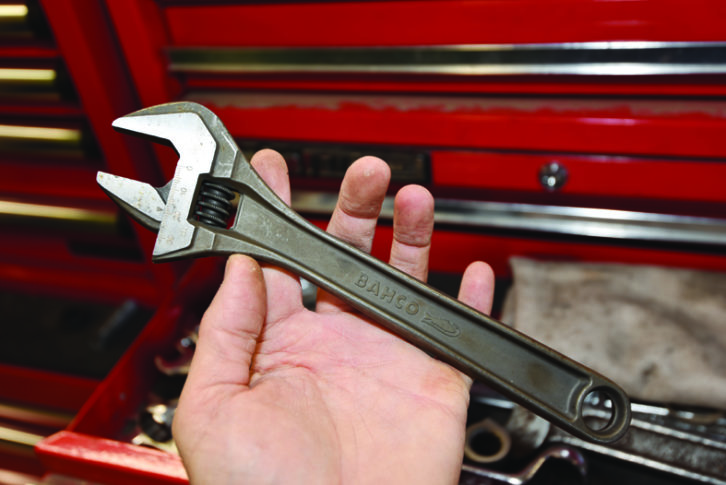
Modern vehicles also tend to use a lot of Torx (also known as star) fixings, so t’s wise to pack a small set of these – a 1/4-inch drive set will be fine for tackling most minor problems.
Although you’re likely to have at least one good sharp knife in the kitchen, it’s unwise to use it for DIY purposes – better to pack a multi-tool.
If you have a fancy A-class on a 20-reg and you normally winter in Portugal, buy a Leatherman; if you want a cheaper tool, look in Lidl or Aldi!
Electrical essentials
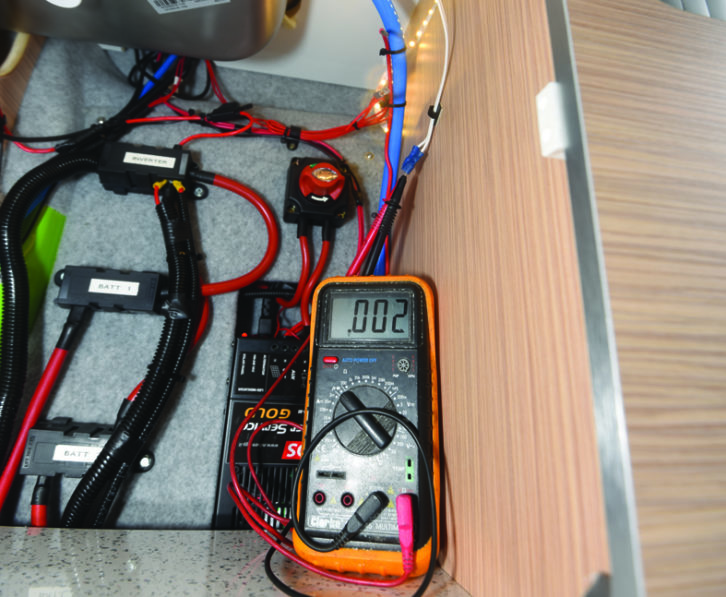
Before you assume that dealing with anything electrical means you need a degree in computer science, a laptop and one of those calculators with funny symbols, I’ll put your mind at rest.
Most habitation items in a motorhome run off 12V battery power. When you plug into a hook-up, your charging system kicks in and the batteries are recharged with mains power. But all of the systems are still running on 12V power. And the good news is, with care, 12V systems are easy and safe to check.
Many motorhome power problems can be traced back to flat batteries. If any electrical item is playing up, this is always the first question to ask: is the battery charged?
Low voltage can cause all sorts of nonsense to show up on your control panel and make any electrical gadget behave strangely. In winter, batteries have less capacity, so the first step in checking any electrical concern is to measure battery voltage with a multimeter. Forget using your control panel – low voltage will cause it to misbehave and send you on a wild goose chase.
Just £20 to £30 buys a basic digital multimeter and they’re a doddle – you can get them online for even less, but I’d stick to brands from Machine Mart, Halfords or your local motorhome dealer.
Plug the leads into the appropriate holes on the instrument (they’re labelled), turn the dial to DC 20V and simply touch the red lead to your leisure battery positive and the black lead to your leisure battery negative.
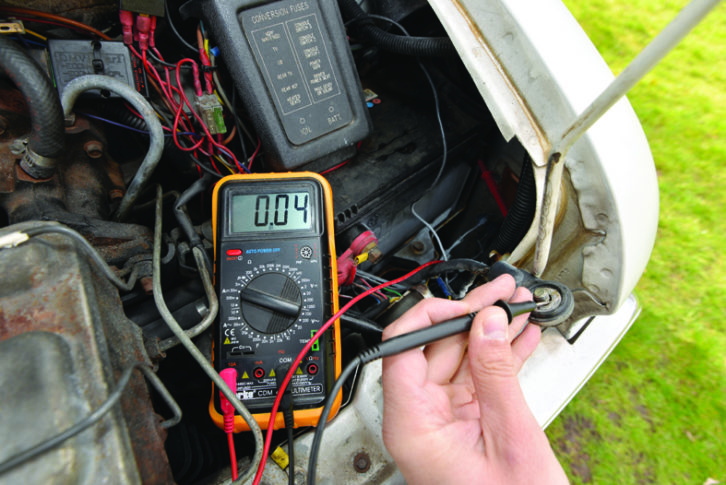
Typically, a voltage of around 13V means the battery is fully charged, 12.6V means it’s half-flat and anything under 12V means that it’s pretty flat and needs recharging. In winter in the UK, small single solar panels will struggle to keep leisure batteries recharged, so it’s always wise to plug into a mains hookup in any period of lay-up.
The other thing to pack is a set of automatic wire-cutters (about £20), a pack of automotive wire and a ‘chocolate block’ electrical terminal block. If a connector breaks or fails, this lets you bypass it. Don’t bypass fuses with it! If a fuse keeps blowing, there’s a wiring fault, or something too powerful plugged into a 12V socket.
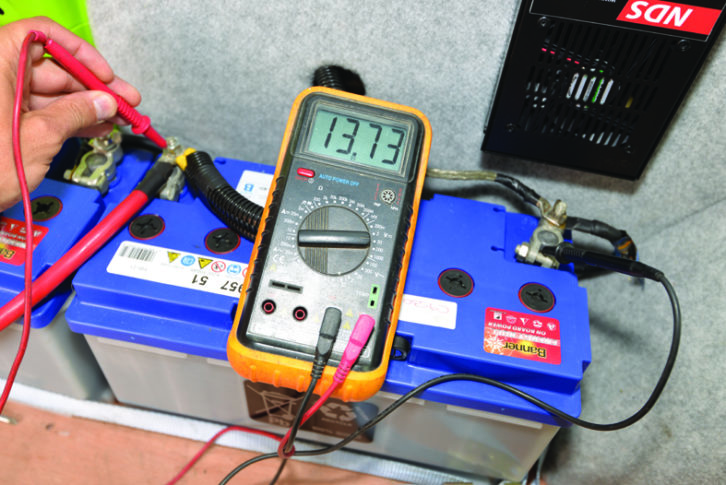
Whichever fuses your 12V habitation and base vehicle use, keep multipacks – Halfords are a good source. Don’t buy cheap online fuse kits – many have high resistance and can melt fuse holders and cause all sorts of problems. Keep spare fuses by the fusebox if you can.
On the 240V side of things, there is nothing to buy other than a socket test plug that can check if you have reversed polarity when on a mains hook-up. Many motorhome consumer units have a reversed polarity light that illuminates. (For more on reversed polarity, see www.practicalmotorhome.com/advice/spotlight-on-hook-ups).
With any motorhome, familiarise yourself with the consumer unit RCD switches. If one trips, you need to know how to reset it. If it keeps tripping, unplug your mains hook-up lead from the site bollard (before removing it from the motorhome end) and seek help. RCDs trip for a reason: you’ve either overloaded a circuit with a high -powered device (hairdryers and kettles from home are common culprits), or there’s an electrical fault.
Useful power tools
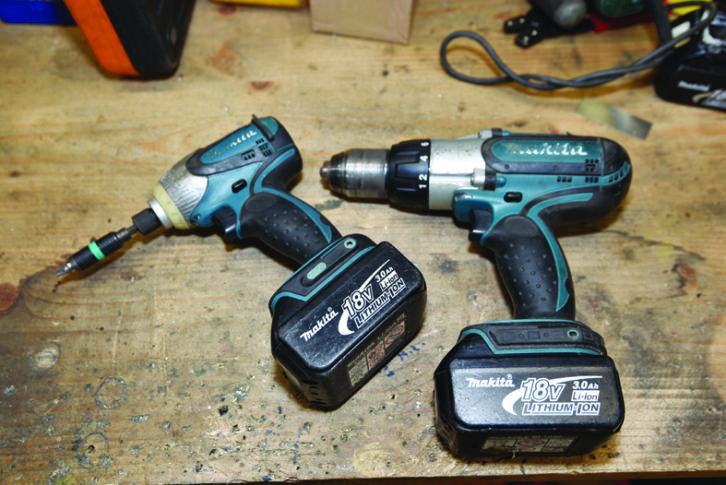
A cordless drill driver (with a screwdriver bit adaptor) is worth packing if you’re doing more extensive touring – these can drill oles in things for emergency repairs and tackle stubborn fixings and even spiral tent pegs. Branded ones are best, but you can find acceptable versions in Machine Mart and even Lidl (the Erbauer brand).
The key thing is to buy one that’s lithium-ion powered – they hold their charge well in storage. Cheaper nickel-cadmium versions go flat when they are not in use – the one time you need them, you can bet that they will have no charge, so in my opinion they’re not really worth having.
Essential consumables
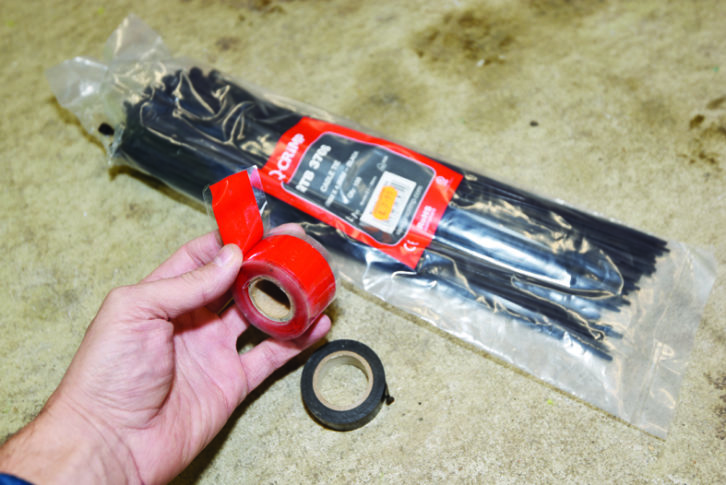
There’s an old saying that if it’s supposed to move, but doesn’t, add WD-40, and if it’s loose, but should be rigid, add gaffer tape. This is true! Pack both, together with a large multipack of cable ties (Lidl do some great value packs). From rigging up temporary washing lines, to reattaching bicycles to bike racks, cable ties are endlessly useful.
Insulation tape is another must, together with self-amalgamating silicone tape. This handy tape is designed to stick only to self and can temporarily reseal leaking coolant hose in the engine, as well as patching leaking water pipes in the cab area. It works under water and can be used on all manner of (temporary) fixes, making it a lifesaver if you’re somewhere remote.
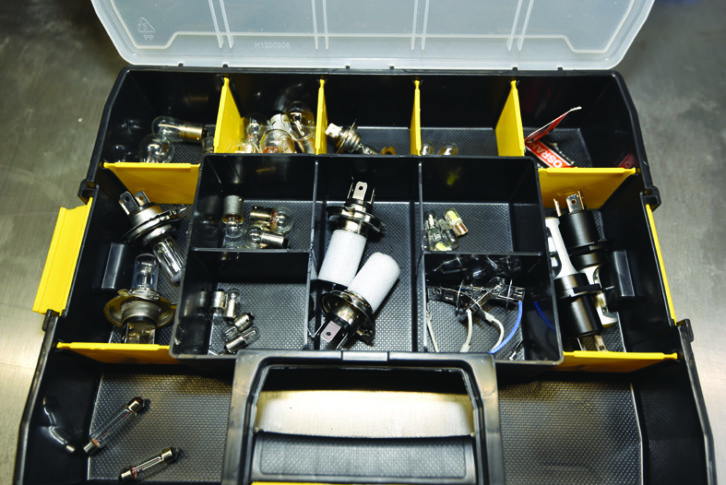
We’ve already mentioned fuses, but the other essential item is a set of headlamp, tail-light and side repeater bulbs. Many modern vehicles use LED table and side lights, which rarely fail, but it’s worth checking what your ‘van requires. Most motorhomes still use conventional halogen headlamp bulbs and it’s a good idea to pack a spare set (and mandatory in many European countries). Don’t buy generic all-in-one bulb and fuse kits – they rarely have bulbs to fit everything on your ‘van. Refer to your owner’s handbook and buy the types it lists.
Tackling a flat tyre
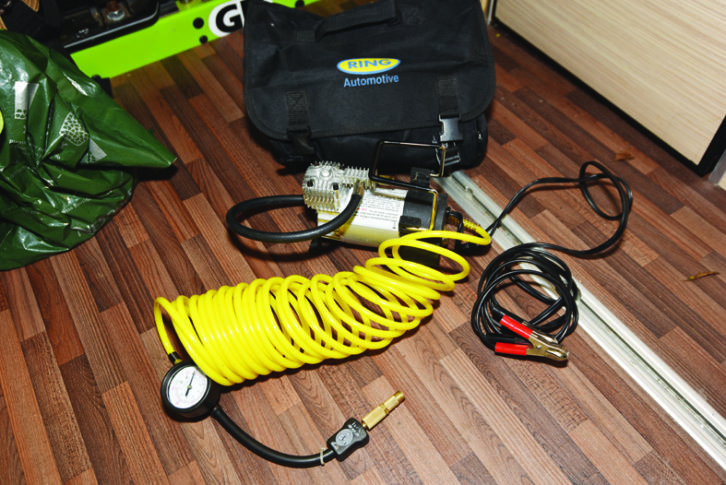
Even if you have no payload for a spare wheel and tyre, it’s useful to pack a spare tyre – especially if you’re touring in Europe. Sunday afternoons in France spring to mind – good luck finding a tyre shop that’s open, or a mechanic! Breakdown firms don’t carry spares (let alone specialist motorhome tyres), so don’t rely on that, either.
Small pinholes can be tackled with the sealant kit supplied with your motorhome, but it’s a good idea to pack an aerosol can of tyre sealant (abut a fiver from Aldi or Lidl). They’re no use with blowouts, but can reseal minor damage, so you can limp to a tyre centre for a proper fix.
If your vehicle doesn’t have a compressor, it’s worth buying one. An excellent choice is the Ring EAC900 (£80 online) – powerful, fast and with a long air hose to reach tyres on long ‘vans. Most £30-£50 compressors that plug into a 12V socket are pretty weedy – designed for car tyres – and can take an age to inflate to motorhome tyre pressures (if they get there at all).
High-powered compressors more suited to motorhomes use crocodile clips, so that’s always something to look out for.
For any larger tyre damage, you’ll need to fit the spare wheel. All vehicles come with a jack, wheelbrace and usually a locking wheel nut key. The trouble is that it’s all very basic stuff and, while it will do the job, the jack is likely to be slow and wobbly and the wheelbase short. So you’ll want an extending wheelbrace – Halfords sell these.
If you’re heading into the wild, I’d also suggest packing a trolley jack. Aluminium ones are best; they don’t take up too much payload and are easy to heft in and out of a garage or storage locker (Machine Mart sells a great selection).
For a 3.5t motorhome, a 1.5t jack is fine (you never lift the whole vehicle as a dead lift, you always lift it on a diagonal, so the actual weight lifted is around a quarter). Larger 3t- and 4t-rated trolley jacks are so large and heavy, you’ll never want to lift them, let alone have enough payload to pack one. In the case of RVs, you’ll have to rely on a breakdown firm.
Whichever type of jack you use, never place any part of your body under the vehicle when it’s only supported by a jack. Alloys often stick to the steel hubs and it’s tempting to try to kick or pull them off from behind. Never do this – always hit them into the wheel well by kicking it inwards from the side of the ‘van.
Habitation body fixings
After 12V issues, the most common items to fail in a motorhome are those that move and are used frequently – habitation and toilet door hinges, window latches, rooflights, blinds and door locks. All can be fixed by an owner with patience and common sense (you might need parts for the blinds, but these are often available cheaply online – hence the need to do your homework!).
Often, to access the mechanism, you have to remove plastic trim around windows and doors – which goes brittle with age – so take great care unclipping any trim. Don’t use a screwdriver to do this – it will crack trim or damage the boarding behind it. Buy a plastic car-trim removal kit, widely available online for under a tenner. These are a set of miniature plastic pryers that you can insert behind the trim, levering it off without causing damage.
Verdict
Tackling simple repairs on your motorhome is all about having the confidence to have a go and the only way to get this is – well – to have a go. You don’t always need to drive to a garage and spend money – many common problems can be solved quickly and easily on a campsite, without having to cut into your precious holiday time. So, as long as it’s appropriate and safe to do so, have a go – you might just surprise yourself!
If you liked this… READ THESE:
Cambelt Replacement: Technical Workshop
If you’ve enjoyed reading this article, why not get the latest news, reviews and features delivered direct to your door or inbox every month. Take advantage of our brilliant Practical Motorhome magazine SUBSCRIBERS’ OFFER and SIGN UP TO OUR NEWSLETTER for regular weekly updates on all things motorhome related.
Future Publishing Limited, the publisher of practicalmotorhome.com, provides the information in this article in good faith and makes no representation as to its completeness or accuracy. Individuals carrying out the instructions do so at their own risk and must exercise their independent judgement in determining the appropriateness of the advice to their circumstances. Individuals should take appropriate safety precautions and be aware of the risk of electrocution when dealing with electrical products. To the fullest extent permitted by law, neither Future nor its employees or agents shall have any liability in connection with the use of this information. You should check that any van warranty will not be affected before proceeding with DIY projects.
Tackling simple repairs on your motorhome is all about having the confidence to have a go and the only way to get this is - well - to have a go
